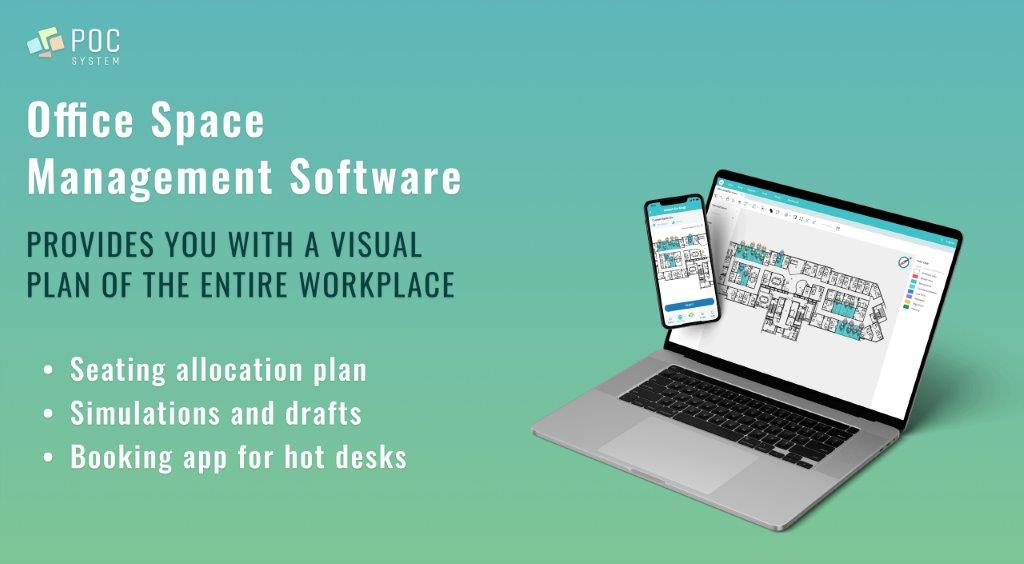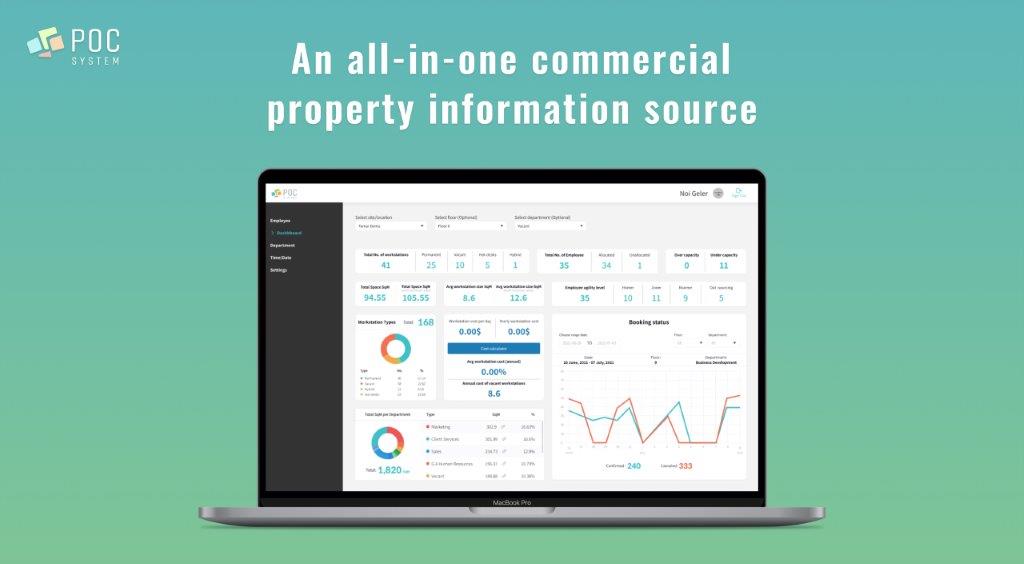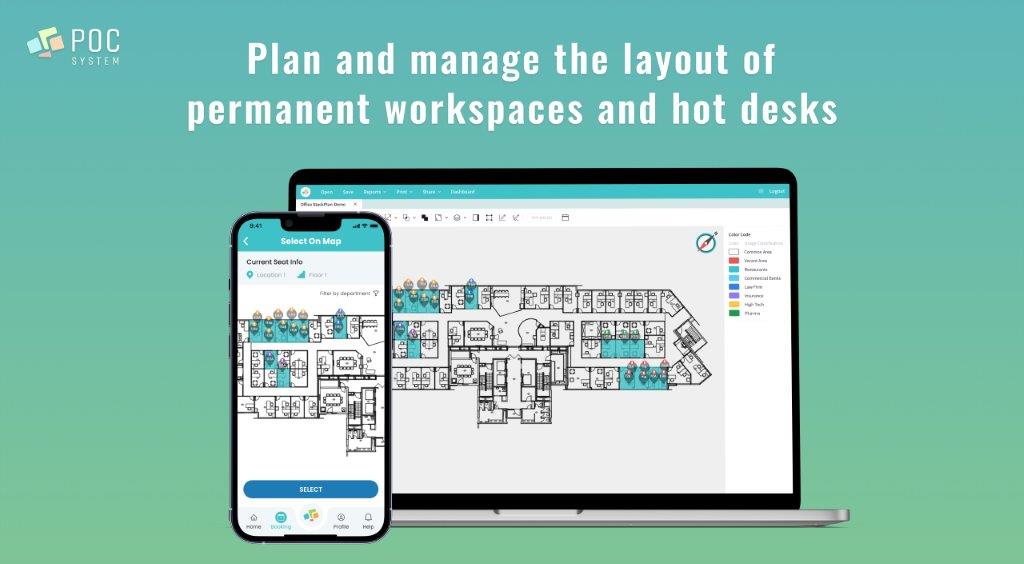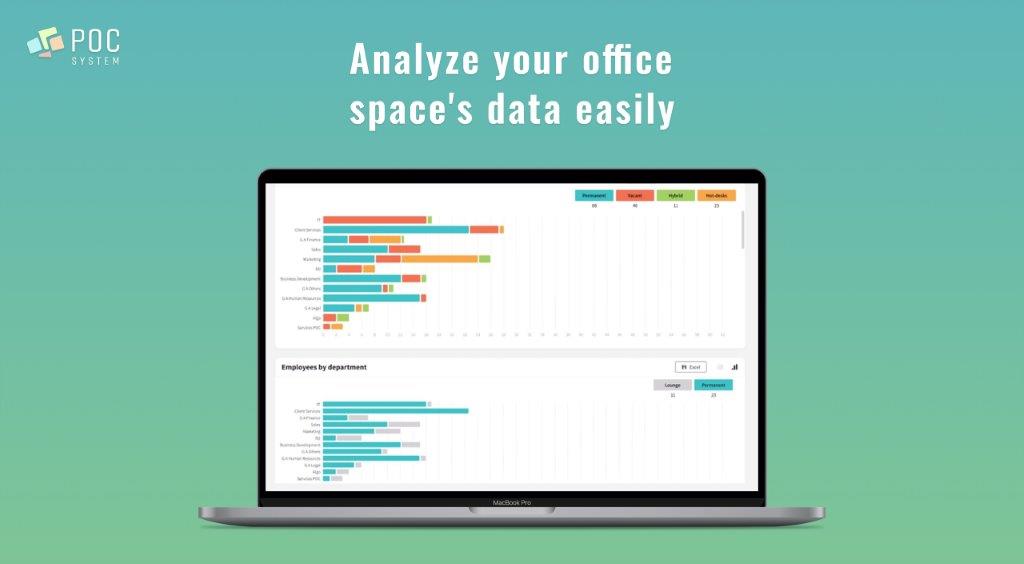Maximize Space Efficiency in Office Real Estate Portfolios
Updated April 27, 2023.

Maximizing space efficiency in your office real estate portfolio can help you optimize your resources, cut costs, and boost overall productivity.
Space efficiency is all about ensuring that the space available to your employees is used to its maximum potential, creating a workspace that supports their needs and fosters creativity and collaboration.
Shockingly, studies show that up to 30% of office space is typically unused, representing a significant waste of resources and potential productivity. Therefore, it's crucial to eliminate space waste across your office real estate portfolio to achieve optimal business results.
4 Steps to Maximize Your Office Real Estate Efficiency
By following these four steps, you can ensure that your office real estate is optimized for efficiency, resulting in cost-effective business operations and increased productivity.
1. Measure Your Space Utilization
Space utilization refers to the percentage of the total office space that's being used effectively.
By measuring it, you can identify areas of improvement and waste in your office space, leading to better decision-making and cost-saving. To calculate space utilization, you can use metrics such as:
- Occupancy rate: The percentage of occupied space in your office over a given period.
- Utilization density: The percentage of occupied workstations out of the total available workstations. Additionally, you can track meeting room utilization, common area utilization, and storage area utilization.
For example, if your office has 100 workstations, and only 70 are occupied during the workday, your occupancy rate is 70%. Once you've calculated your space utilization, you can move to the next step and implement your findings.
■ Find out which other metrics you can use to calculate space utilization
2. Optimize Underused Areas
After analyzing your space utilization data from the previous step, you can identify areas that are underused or inefficiently used, and make informed decisions to optimize them. This can involve transforming or reducing office space, depending on your company's specific needs as seen from real-time data. For instance, if certain areas are used infrequently or have a low occupancy rate, you may consider repurposing the space to serve a different function or reallocating it to more in-demand areas.
Example: A successful instance of office real estate optimization is when Google added "third spaces" to their offices. Instead of populating extra space with more traditional desks or just simply leaving it empty, Google created casual, alternative workspaces. Fit for group collaboration or intimate one-on-one discussions, these versatile areas are an efficient way to use the available office space.
■ Explore other strategies to utilize vacant office space
3. Understand Employee Needs
You should engage with your employees to gather feedback on their work environment, including their physical and psychological needs. This information can be gathered through surveys, focus groups, or even one-on-one discussions. By understanding what employees need to be productive and engaged, you can design a workspace that caters to their specific needs, making the most out of your office real estate.
For example, if your employees require more collaboration space, you can redesign underutilized areas to create collaborative spaces that encourage teamwork and creativity. Alternatively, if your employees need more private workspaces, you can adapt your office layout to create quiet spaces where employees can focus and concentrate.
Understanding employee needs is crucial in creating an office environment that supports and enhances their productivity, engagement, and well-being, all of which contribute to better business results.
■ Increase employee satisfaction with flexible workspaces
4. Use Space Optimization Software
Using space optimization software can significantly simplify the process of maximizing space efficiency by using real-time data and analytics to identify underutilized areas, suggest potential workspace improvements, and offer insights into employee needs.




POC System's Office Space Management software is an ideal solution if you're looking to streamline your space optimization efforts. This app provides helpful features such as:
- Analytics and metric tracking
- Digital floor plan management
- Meeting room and desk booking app
With this software, businesses can easily identify areas that are not being used to their full potential, redesign underutilized spaces, and create a more productive and efficient work environment. Furthermore, POC System allows you to track and monitor the impact of these changes, ensuring that they're having a positive effect on productivity, employee satisfaction, and overall business results.
Don't Space Out: Effortlessly Optimize Your Office Space
Optimizing your office real estate for efficiency is a step towards maximizing space usage and achieving cost-effectiveness in running your business. By measuring space utilization, optimizing underused areas, understanding employee needs, and using space optimization software like POC System, you can transform your office space and make it more productive for your employees.
Ultimately, this translates to increased business performance, reduced costs, and a more productive workforce. With solutions like POC System, the process of optimizing your office real estate for efficiency becomes less time-consuming and expensive, making it a win-win situation for your business.
Find out more about how POC System can help you boost office space management
